Dell XPS 630 Gaming PC Review
Dell XPS 630 Gaming PC
On paper, the Dell XPS 630 offers everything the discerning gamer could want.
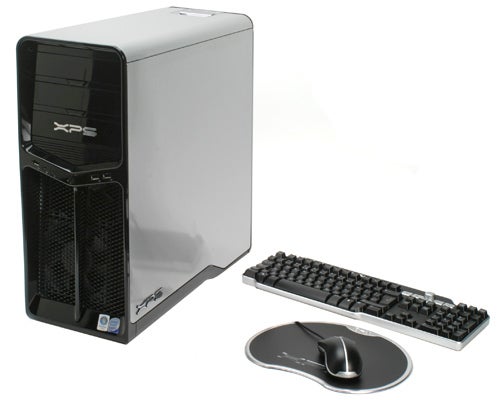
Verdict
Key Specifications
- Review Price: £1149.00
E-VALUE Code: MPUK5-DRX602 – Click here to input code.
When Dell took over Alienware in 2006, there was much speculation as to what would happen to Dell’s XPS gaming range, and some relief when it appeared they would peacefully coexist. Recently, however, that future looked unsure, with rumours of the Dell XPS range’s demise. Thankfully, these rumours were greatly exaggerated. I say thankfully not because Alienware’s gaming PCs are bad, but because having the XPS range alongside them affords the customer more choice – and surely that can’t be a bad thing.
Especially since the target customer group in this case is gamers, and gamers like their individuality. They’re basically the reason PCs are no longer boring beige boxes, as at some point the industry in general copped on to the fact that people were investing large amounts of time and money on prettying them up, and decided to do it for them – at a premium, of course. 
Dell, being the second-largest PC manufacturer in the world, has obviously got in on this action, offering custom looks across its entire XPS desktop and laptop range. And though personally I’ve not always found Dell’s XPS desktop designs the most attractive, I must admit its current case line-up (420, 630 and the high-end 730) is rather gorgeous. What we have before us today is a 630, falling between Dell’s budget and extreme lines. The 630 is quite attractive, despite lacking features like the LCD panel, front mounted video ports and rubberised recess that are found on its lower spec sibling, the XPS 420.
But before getting onto the case, let’s first examine what you get. The core specifications are impressive, comprising a 2.4GHz Intel Quad Core QX6600, dual nVidia GeForce 8800GTs running in SLI, 2GB of RAM, twin 500GB hard drives striped in RAID 0 and a Creative Sound Blaster X-Fi XtremeGamer soundcard.
In the box you’ll also find a full user manual in English, multi-lingual electronic safety instructions, and a full-colour quick-start guide. All of these are contained in a lovely leather XPS folder with pockets for 16 DVDs, two Velcro cable ties and a textured XPS cleaning cloth. You also get Roxio Creator DE 10.1, Microsoft Works 9, an OS re-installation disc, Dell drivers and utilities, and the SoundBlaster X-Fi CD.
The included Dell keyboard looks neat, but is essentially just the standard keyboard with an added silver trim and some media controls. Keys don’t offer positive feedback, almost feeling mushy, and feature some very long travel; hardly ideal for gaming. The media controls are green-backlit (to match Dell’s monitors), and there is the unexpected and pleasant surprise of a two-port USB 2.0 hub. The included wrist-rest is flimsily attached but adequate, and a must due to the keyboard’s uncomfortably high profile. 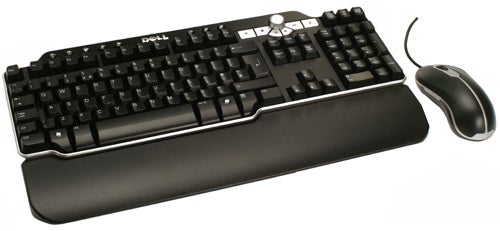
Also included is a Dell five button mouse, which wins the distinctive honour of being one of the worst mice I have ever used. Its symmetrical shape is neither completely comfortable for palm or fingertip use, the buttons lack response, the ‘forward’ button on the left hand side is difficult to reach, and the scroll wheel does not have a pleasant coating or grip, nor does it provide ‘notched feedback’ – an essential for many gamers.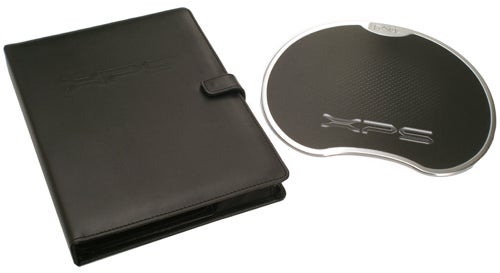
The mouse-mat on the other hand is quite decent, featuring a curvy design, non-slip rubber bottom and textured top. It provides a better mouse response than my cloth work mat, though it could do with being few centimetres bigger.
Moving on, the Dell case is a mixed bag. While there are a few disappointments, it is also full of nice touches. For example, I cannot emphasise enough how much I love the case’s top release-lever mechanism, which releases one of the side doors with a simple pull. And thankfully, the panel reinserts as easily as it comes out. The 630 also has Bluetooth 2.0, not a feature found often on Desktop PCs. 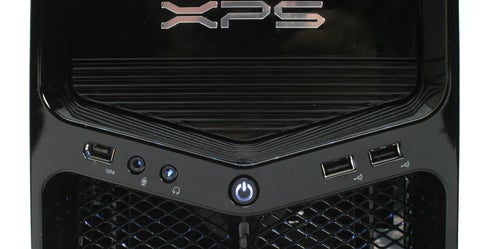
Three Aqua coloured (by default) LEDs just above the DVD drives not only light up the silver XPS logo, but also let you see what CD/DVD you’re taking out of your drive. Of course, you could just check via software, but now you don’t have to. It’s one of those completely superfluous touches that are nonetheless nice to have. The LEDs, together with two at the Dell’s rear, are actually part of its Light FX program, which should allow you to change the colours or run various patterns. Unfortunately, on our sample machine we could not find this functionality anywhere, and a search on Dell’s website proved fruitless.
Another touch that you will not find on many PCs is that the CPU’s large and heavy cooler is supported by a thick rubber pad. This is ideal for transporting the XPS (Lan Party anyone?) without having to remove the cooler or risk breaking your motherboard. The cooler itself, meanwhile, is an impressive looking affair with copper heat pipes running through aluminium fins.
Overall, the casing of the XPS 630 is very well constructed and build quality is good. The case largely consists of thick, lacquered aluminium and though fingerprints show easily, it’s also really easy to clean. This is offset by – déjà vu – the piano black plastic that forms the front and back of the case. Thankfully, the plastic is so thick it makes nearly as solid an impression as the metal. The only things that look relatively flimsy are the clips holding the front part of the chassis onto the rest of the case, but since there is no practical reason to remove the front (unless you want to mod, in which case why buy a pre-built system in the first place?), it it shouldn’t be a problem.
Another plus point is the relative thickness of the sides. This helps sound dampening and after an initially loud start-up, the computer settles into a quiet hum that is discernible but not particularly annoying.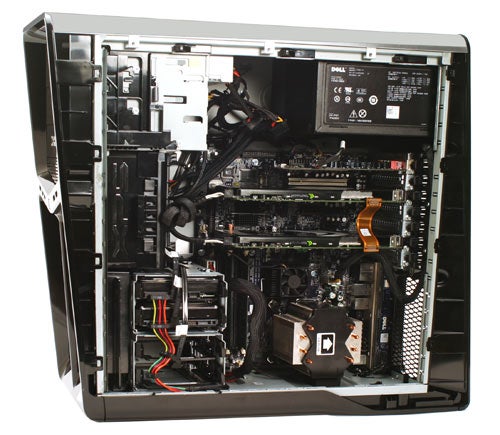
There is a fair selection of inputs on offer. On the front, we have two USB 2.0, a six-pin FireWire and 3.5mm headphone and microphone ports. At the back there are a further four USBs, another six-pin FireWire and legacy PS/2 ports, while the 630 has some very capable dedicated audio in the form of a PCI-based Creative Labs Sound Blaster X-Fi XtremeGamer featuring digital in, out, and analogue 7.1 outputs.
The primary video card’s connectors are left free to give you two DVIs, while the secondary card’s connectors are hidden by a plastic dust cover that must be removed to access the other two ports. Conspicuous by its absence is any form of eSATA connector, a rather glaring omission in a PC aimed at the enthusiast market and especially one costing this much. Even Dell’s lower-end 420 range features this connection.
Inside, things look quite tidy. There are a few slightly sharp edges, but none you’re likely cut yourself on. The 3.5in bay is taken up by a media card reader supporting CompactFlash, MicroDrive, xD, SmartMedia, SD/miniSD, MMC/RS-MMC and MS/Pro/Duo, which is hidden under a hinged cover at the front. Unfortunately the cover’s latch and hinge are plastic, so despite being quite sturdy care is advisable.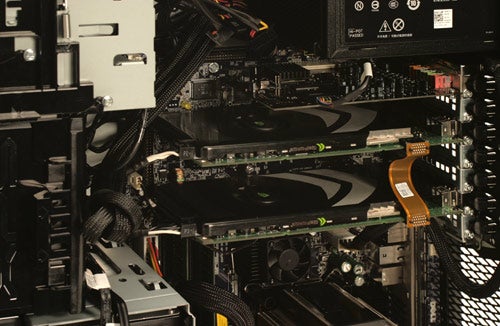
There is a tool-free system for holding PCI cards, but though it is easy to operate, it isn’t the best at holding things in place – and Dell seems to have realised this, as it has added screws to all the cards. However, the system works well enough to be useful if you don’t move your PC around too much, and is incredibly handy when trying to screw things in.
A 750W non-modular PSU with braided cables should handle all the PC’s power needs with ease. Being non-modular actually makes it the only ‘messy’ part of the case, since there are some spare cables hanging loose, while others are too long. But this is nitpicking, really, as the cables are tidied reasonably well, and the spare ones are guided to where they might be used in the future. There is even a spare SATA cable attached to the motherboard and routed to an empty hard drive caddy, in case your needs outgrow the supplied 1-Terabyte. Alternatively, you can use the motherboard’s one remaining free SATA port to install a backing plane with eSATA, or to install a PC Blu-ray drive.
A nice feature is that the XPS 630 features a cage containing four plastic rail-bays, which are easily removed by pressing two clips, and is rotated 90 degrees to ease installation. Hard drives can just clip in or out, meaning installation is completely tool-free, though the system does feel just the slightest bit fragile.
To go with its largely impressive other specifications, this configuration of the 630 gives you a gargantuan 1-Terabyte (1000GB) of hard drive space, made up of two 500GB drives in RAID 0. Unusually, Dell has gone with drives from different manufacturers, with one Western Digital Caviar and a Samsung Spinpoint. However, they offer similar specifications including 16MB cache, 7,200RPM and SATA3. Just remember that though the nVidia stripe 0 RAID offers the advantage of faster performance and is therefore ideal for a gaming rig, if one of the drives fails, you lose all the content on both, meaning you’ll want to keep important data backed up separately. 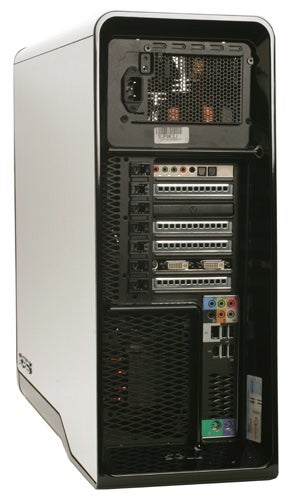
Compared to the advanced HDD bays, the single free 5.25in one seems positively primeval. It’s back to the days of slipping a drive into a metal enclosure and screwing it in, without any noise dampening measures. Thankfully, there’s already a TSST-branded SATA 16x DVD+/-RW installed.
There are two 120mm fans pulling fresh air in from the front of the case, one of them passing it over the hard drives and one over the graphics cards. Unfortunately, neither have a dust filter and when you are paying over £1,000 for a system, how much would a simple dust filter add? No more, surely, than the included (disposable) mouse and keyboard.
Another slight problem is that due to the 630’s design, the top fan is only given half an air intake. And, though there is a provision for a smaller 80mm fan at the rear of the case directly behind the CPU, one is not provided. So apart from the PSU, the two front fans are the only cooling for the case. 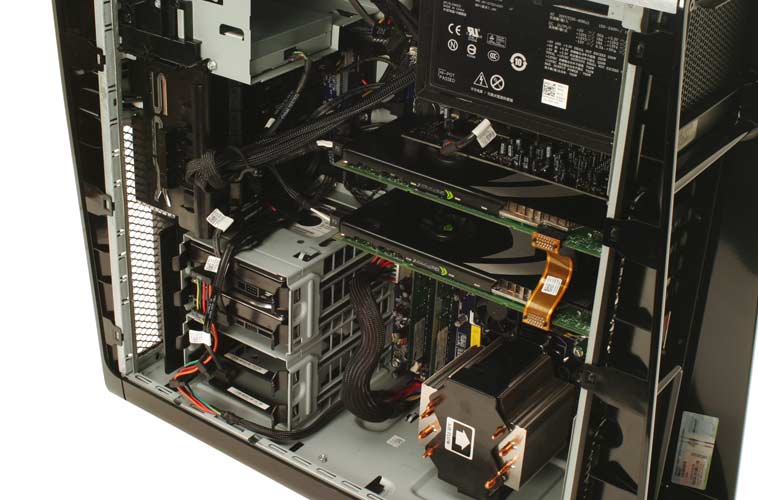
Not that this is necessarily a bad thing, as airflow throughout is generally good. There is only one pocket where heat tends to build, just behind the processor and cooler towards the back of the case. This is not a major problem, however, and can be easily remedied by installing the aforementioned 80mm fan if it’s a concern.
Unfortunately, the case does not feature a removable motherboard tray, but then you’re more likely to upgrade individual components than the entire motherboard and anyone interested in regularly updating their hardware isn’t likely to buy a Dell XPS anyway.
The motherboard, a custom Dell nVidia nForce 650i SLI variant, sports a lovely black PCB, and thankfully none of the flashy colour-coding that a third party board might display. The motherboard’s cooling is not passive either, but the small fan does not add too much noise. RAM slots are easily accessible, and are equipped with two 1GB sticks of plain, generic Mosel 800MHz DDR2 memory in dual channel mode.
This seems slightly miserly, especially on a Quad-core SLI system, as many modern games can take advantage of up to 3GB under a 32bit Operating System. To maintain dual channel mode, all Dell had to do was add two more sticks of 512, or, considering the dirt-cheap DDR2 prices, put in 4GB (which would also be better if the consumer ever wanted to upgrade to Vista 64). But to be fair, it does offer the 3GB option for only £20 extra onto the base price, and RAM is one of the easiest upgrades to do yourself.
In terms of performance, the Dell XPS 630 is obviously going to trample almost everything you can throw at it – though of course, the machine that runs Crysis at full detail and a decent resolution has yet to be assembled. Even a single nVidia 8800GT would make for a good gaming machine, and having two of them in SLI means that this configuration breezes through graphically intensive games. 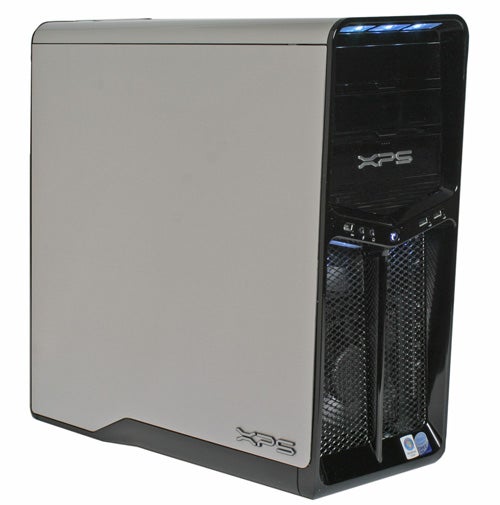
Most modern titles should give it no more bother than a mosquito would a tank. Call of Duty 4, for example, ran perfectly smoothly at 1,920 x 1,200 with all the settings at maximum, and never dipped below 50 frames per second. So keep in mind that to do full justice to this system, you should pair it with a monitor that supports this kind of resolution, like the recently reviewed Dell UltraSharp 2408WFP.
”’Verdict”’
While not outstanding value, the Dell XPS 630 is a good machine sporting a few unique touches. It’s well built, attractive, quiet and still offers some room for future expansion. Meanwhile, its components will let you run most games, with the exception of Crysis, at high settings at 1,920 x 1,200. Add in the peace of mind and extensive warranty options afforded by buying from the second largest PC manufacturer in the world, and it’s a worthwhile option even if you could get a similar configuration cheaper elsewhere.
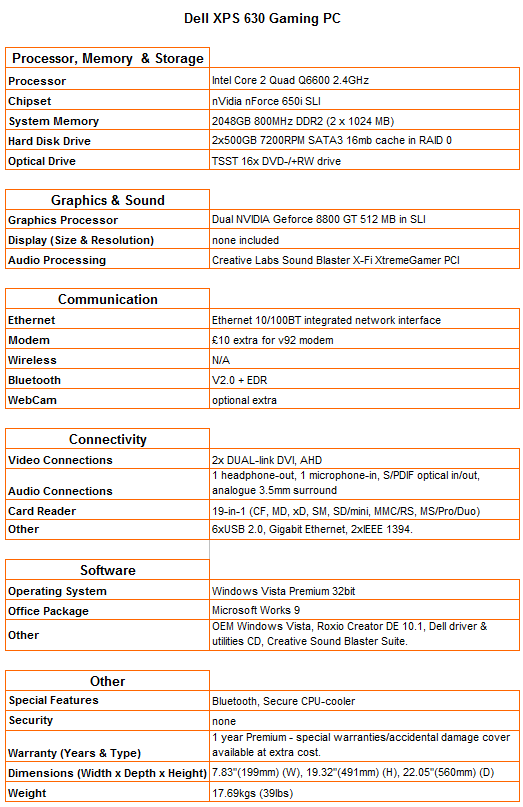
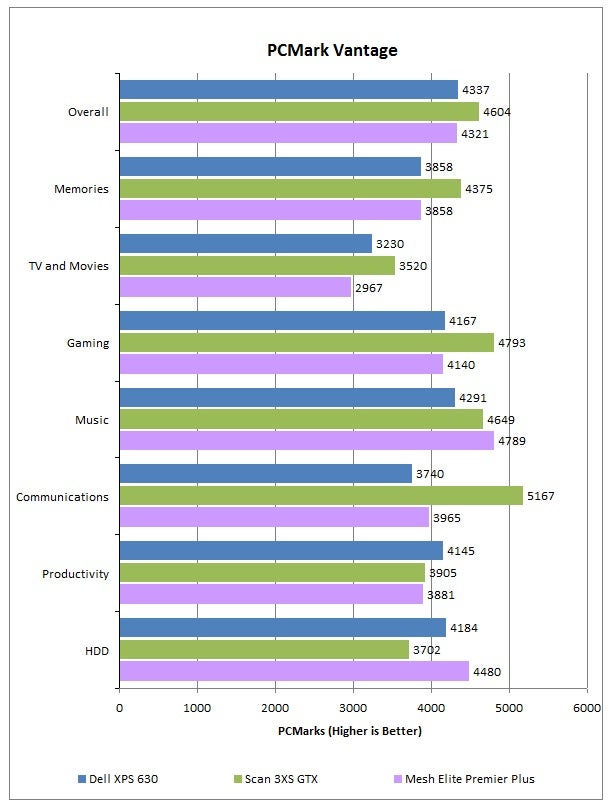
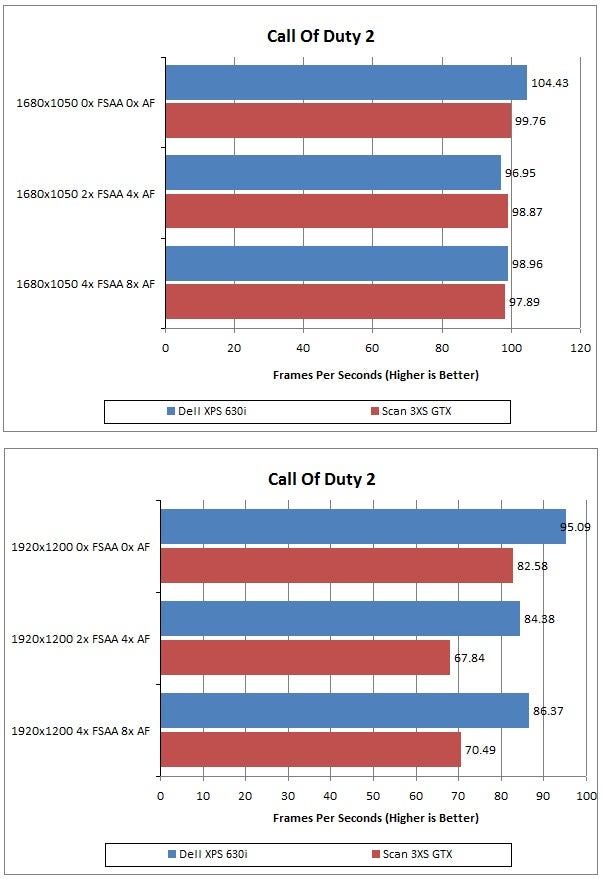
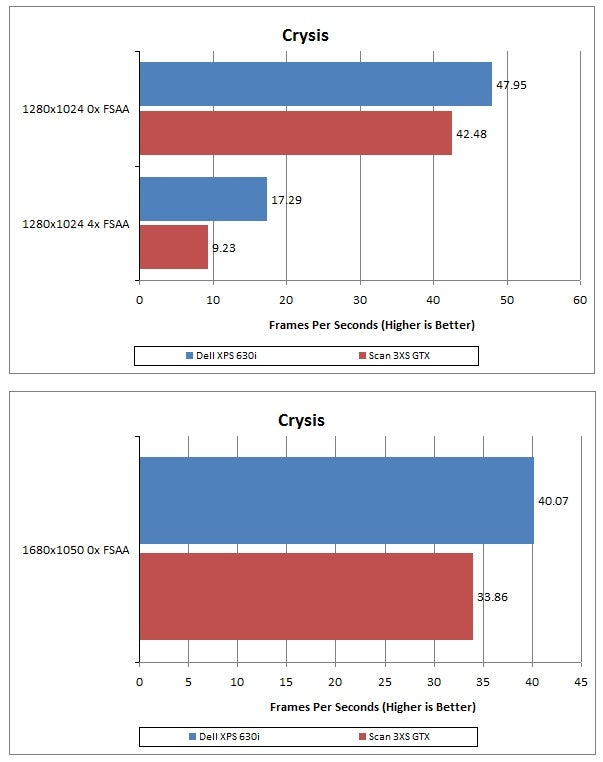
Trusted Score
Score in detail
-
Value 8
-
Features 8
-
Performance 9
-
Design 8

